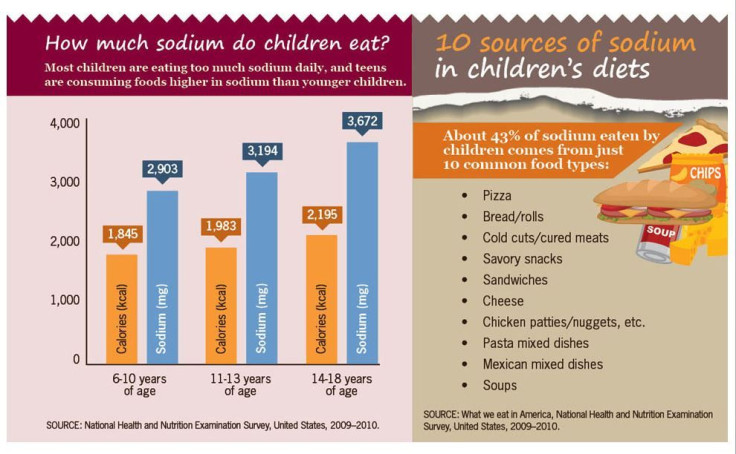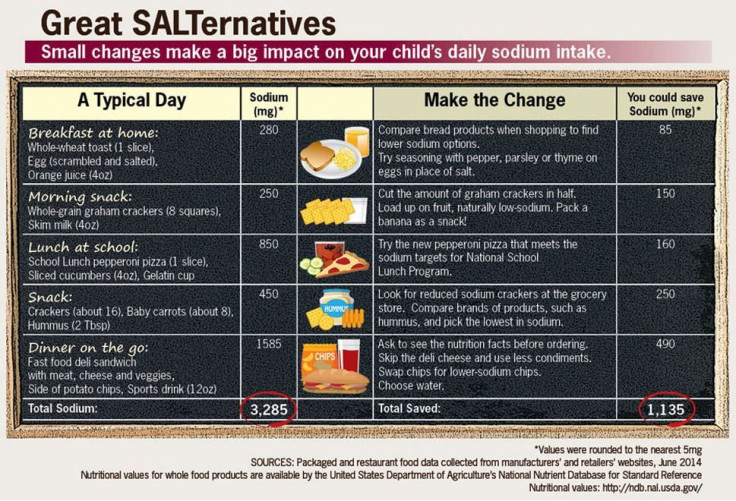Lowering Sodium Intake To Raise New Generations Of Healthy Kids: A Look Forward With The CDC

America is unhealthy — with more than one-third of adults obese and millions of children following closely behind in their parents' footsteps. Breaking down the barriers of an overwhelming assortment of prepackaged foods and salt-laden restaurant meals, however, begins with a plan of action. We sat down with the Centers for Disease Control and Prevention (CDC) to learn about the government’s latest plans to raise a new generation of healthy lifestyle choices and habits.
CDC Senior Scientist Molly E. Cogswell and her research team combed through 1,000 commercially labeled food products and recorded the nutrition content from the back of each item, and found both infant and toddler snacks were high in sodium. Their study, published in the journal Pediatrics, was the first study in decades to examine what parents and caretakers are feeding their children every day.
“What’s interesting in infants back in the 1970s is that the National Academy of Sciences recommended that infant products could have no more than 2.5 percent of sodium,” Cogswell, the study’s lead author, explained to Medical Daily. “The manufacturers pretty much followed those recommendations and as we saw in our infant products, they were pretty much across the board low in sodium. It’s the toddler products that are more of a concern.”
More than seven in 10 toddler meals, she explained, were high in sodium, such as toddler macaroni and cheese. What's more, infant and toddler snacks “contain as much salt as adult potato chips, so you’re training the child’s palate to like these sorts of foods,” she added.
The researchers found 72 percent of toddler dinners had high levels of sodium, while 32 percent of toddler dinners and most snacks had added sugar. Cogswell reflects back to a time when her mother served bologna and white bread, but after reading a book on nutrition her childhood meals began to change. She adapted to the low sodium meals and grew up to embrace healthier choices and make a career out of helping others do the same.

One of the CDC’s efforts includes the Million Hearts campaign, with a goal aimed at preventing one million heart attacks and strokes by 2017. Groups of doctors created calculated low-sodium meal ideas, recipes, and nutrition information vetted by certified dieticians, in order to reteach the public how to eat and provide food for their family in a healthy and manageable way.
“It’s a concern because what children eat when they’re little determines what they like when they’re older,” Cogswell said. “When infants are exposed to sugar, they smile. So we all have this sort of innate liking of sugar. Sodium is not the same way, we develop that taste for sodium from what we’re exposed to.”
The U.S. Department of Agriculture’s new school lunch guidelines for the “Health, Hunger-Free Kids Act” are part of an ongoing process to make healthier changes for children through their school lunches. One of the cornerstones of the program is trying to reduce sodium content by 25 to 50 percent by the year 2022, which many schools have already successfully integrated with success and compliance by students. School lunches account for 10 percent of a child’s sodium intake, and the CDC has calculated if the reductions take place, schools alone have the power to cut an average of 400 milligrams (mg) a day.
“It may not seem very much to an adult,” Cogswell said, “but if we all reduce the amount of sodium we consume by 400mg per day, we could save 28,000 deaths per year and $7 billion in health care costs annually, which is a huge deal.”

The CDC and USDA are working to effectively lower the nation’s overall sodium intake, but they’re starting as early as they can in order to intercept the salty palate training. Cogswell also found through current research efforts that are scheduled to release in the near future, by the time a child turns 2 his sodium intake increases nine-fold.
Currently, 90 percent of children eat too much sodium, which in turn has led to the high blood pressure of one in every six children. Because they’re still young, their blood pressure can be lowered to a safe level with a healthy low-sodium diet. Through rigorous intervention processes and nutrition awareness, researchers and parents alike hope for a healthier future for the next generation.
Source: Merritt R, Park S, Yuan K, Gunn J, Cogswell M. Sodium and Sugar in Complementary Infant and Toddler Foods Sold in the United States. Pediatrics. 2015.



























